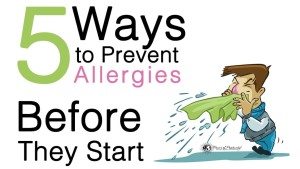For most people, owning their own home means having a calm and inviting place that they can retreat to after a long workday. It is also a great place to unwind and spend time with their friends and family. And buying your own home is still arguably a sound investment, according to most economists and financial experts. However, as a homeowner, it will be your responsibility to maintain your home. And making sure that it has good air quality is no exception in this regard.
According to a study published by the U.S. Environmental Protection Agency, an independent agency of the U.S. government responsible for setting and enforcing national pollution-control standards, the air in most homes contain a higher concentration of pollutants compared to that of outside air.
This news is especially alarming. That’s true especially when you consider that, aside from work, the average American spends a large percentage of their day at home. Fortunately, there are numerous things that homeowners can do to improve the air quality in their home without breaking the bank.
WHAT YOU MAY NOT KNOW ABOUT ALLERGIES IN AMERICA
A study published by the American College of Allergy, Asthma, and Immunology revealed that allergies account for more than $18 billion in healthcare costs every year, most of which are related to treating asthma and allergic diseases. Some of the most common allergic diseases caused by indoor allergens include allergic rhinitis, which can cause sneezing, stuffy nose, runny nose, and watery eyes, and eczema, a condition characterized by patches of inflamed, itchy, red, cracked, and rough skin.
Most people develop asthma or allergic diseases after they have come in contact with pollen, mold, and dust mites in the very sanctuary that they call home. While the allergic reaction triggered by being exposed to these allergens is typically limited to sneezing, stuffy nose, runny nose, and other mildly unpleasant symptoms, they can sometimes trigger severe asthma attacks.
In some cases, exposure to these allergens can also cause anaphylactic shock or anaphylaxis. For those who may not be familiar with this condition, anaphylactic shock is a severe allergic reaction that causes a drop in blood pressure. This drop in blood pressure deprives cells and organs in the body of the oxygen they need to function correctly. Some of the most common symptoms of anaphylactic shock include the following:
- Abdominal pain
- An increase in body temperature
- Hives
- Flushed or pale skin
- A swollen tongue
- Nausea and vomiting
- Diarrhea
- Difficulty swallowing
If you develop any of these symptoms after being exposed to indoor allergens, you should be seen by a physician as soon as possible to avoid life-threatening complications. The same also applies to outdoor allergens.
HOW KEEPING YOUR HOME CLEAN CAN LEAD TO BETTER AIR QUALITY
Along with pollen, mold, and dust mites, more than 50 percent of homes in America are plagued with cockroach droppings and pet dander, all of which can make their way into bedding, flooring, linens, and much more, according to a study published in the Journal of Allergy and Clinical Immunology. Some of the best ways to go about removing these allergy-causing bacteria from your home naturally include
- Vacuuming regularly
- Washing sheets and other bedding in hot water once per week
- Promptly removing mold spores off the walls
- Keeping your windows closed to prevent pollen from getting into your home
- Keeping your home free of cockroaches and other pests
 10 NATURAL AIR PURIFIERS TO IMPROVE THE AIR QUALITY IN YOUR HOME
10 NATURAL AIR PURIFIERS TO IMPROVE THE AIR QUALITY IN YOUR HOME
Along with keeping your home clean, using all-natural air purifiers is yet another way to rid your home of allergens and improve its overall air quality. That said, some of the most effective, natural air purifiers include the following:
1. INDOOR PLANTS
Along with absorbing carbon dioxide, indoor plants do a remarkable job when it comes to removing indoor allergens as well. They can also help remove allergy and asthma-inducing bacteria, such as benzene, formaldehyde, and trichloroethylene, according to a study conducted by the National Aeronautics and Space Administration (NASA). That said, some of the plants that double as natural air purifiers include Peace lilies, Boston Ferns, Snake Plants, English Ivy plants, Dragon Trees, Spider Plants, and Lady Palms.
2. BEESWAX CANDLES
Unlike traditional paraffin candles, which can sometimes make the air quality in your home worse, beeswax candles are natural air purifiers that can be used to rid your home of allergens. Studies show that these air purifier-based candles, which, unsurprisingly, smell very much like honey, can help remove dust mites and dander in your home by releasing negative ions into the air. And in doing so, they reduce your risk of developing asthma or allergic diseases.
3. HIMALAYAN PINK SALT LAMPS
Himalayan pink salt lamps, as the name might suggest, are lamps made from salt that comes from the Pakistan Himalayas. And similar to candles made from beeswax, when switched on, they release negative ions that can help rid your home of indoor allergens. Also worth noting, a 1998-study published by the American Psychological Association found that the dim, amber light produced by these lamps may even be a viable treatment for those struggling with seasonal affective disorder.
4. ACTIVATED CHARCOAL
Activated charcoal is another cost-effective way to go about improving the air quality in your home. Also commonly referred to as activated carbon, activated charcoal can be found in air filters as well as many professional-grade air purifiers. In either case, they do an excellent job in terms of removing harmful bacteria from the home that would otherwise cause asthma, allergic diseases, and other health problems.
Filters and air purifiers that contain activated charcoal work by trapping volatile organic compounds, odors, and other unsavory household contaminants in charcoal before they have a chance to invade the air in your home, not to mention linen, bedding, and carpeting. Indeed, activated charcoal is an effective, low-cost way to keep your home smelling fresh and, above all else, free of allergens.

5. SODIUM BICARBONATE
Also known as sodium bicarbonate, baking soda is another must-have for homeowners as it can help absorb foul odors that can make your home feel less inviting. Because most household odors are highly acidic, using baking soda in your kitchen or bathroom, for example, can help lower the pH levels that give off those foul smells. It can also absorb moisture, which can lead to mold. Furthermore, this particular natural air purifier is one of the least expensive on this list.
6. ESSENTIAL OILS
When discussing natural air purifiers for your home, essential oils should be a part of that conversation. That said, some of the oils that can significantly improve the air quality in your home include pine, clove, lavender, eucalyptus, tea tree, oregano, thyme, and lemon. All of these oils can reduce the microbes in the air that carry viruses, fungi, bacteria, and toxic particulates. For maximum air purifying results, it is best to use these amazing oils with a diffuser.
7. HEPA FILTERS
HEPA filters, also known as high-efficiency particulate absorbing filters, are a must-have for homeowners who take purifying the air in their home seriously. Studies show that these mechanical air filters are effective in trapping over 99 percent of particles measuring 0.3 microns or less. That aside, these high-efficiency filters can help rid your home of the following:
- Pet dander
- Dust mites
- Tobacco smoke
- Pollen
8. EXHAUST FANS
While not a natural purifier per se, exhaust fans do an excellent job when it comes to improving the air quality in a home. In short, they are whole-house ventilation fans that can improve air circulation in your home. More than that, they help remove excess moisture that can lead to mold as well as foul odors, tobacco smoke, dust mites, and a host of other contaminants that would otherwise make you and your family sick.
9. AIR IONIZERS
Are you or a family member prone to asthma attacks? Then it might be a good idea to invest in an air ionizer for your home. These devices work by producing negatively charged ions and discharging them into the air. Once this happens, these same charged ions capture allergens and other pollutants in the air. Those particles could potentially trigger asthma symptoms, especially among those who are already struggling with the respiratory condition. As a natural air purifier, ionizers also do a phenomenal job when it comes to removing odors as well.
10. KEEPING YOUR WINDOWS CLOSED
When the air in one’s home feels stuffy, the first thought that most people have is to open the window. However, doing so might be a bad idea. After all, if you open the windows in your home, you will essentially be inviting pollen, ragweed, and other allergens into the home, which can make you and your family sick. A better option would be to make use of your home’s built-in fan system if you have one or trying some of the natural air purifiers detailed in this article.
FINAL THOUGHTS ON NATURAL AIR PURIFIERS
In summary, as a homeowner, investing in an air purifier of some kind just makes sense. After all, asthma and allergic diseases. Moreover, both are byproducts of poor air quality, are two of the leading causes of hospitalization in America today.














 Community
Community

